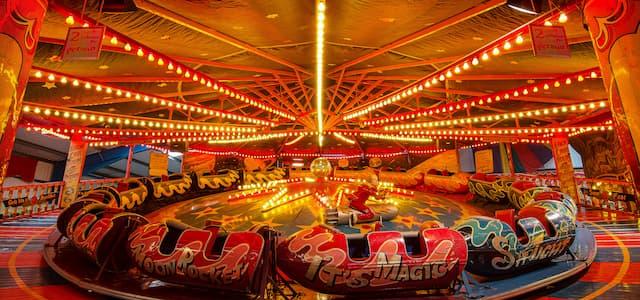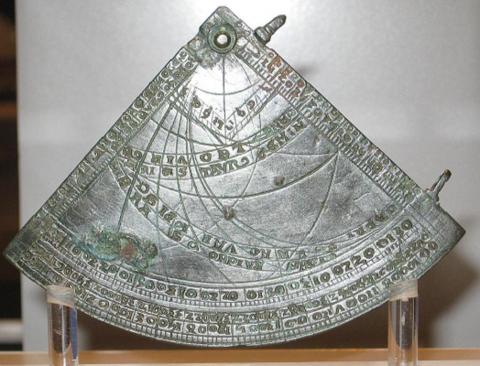
British Museum second time lucky in securing astrolabe quadrant
The Canterbury Astrolabe Quadrant, one of only eight instruments of this type known to have survived from the Middle Ages, will now remain in the UK.

The British Museum attempted to purchase the quadrant in 2007 but was outbid at auction. This extremely rare and important object was subsequently export-stopped, and thanks to the generous assistance of the National Heritage Memorial Fund (NHMF), The Art Fund, the UK’s leading independent art charity, and British Museum Friends, it has been acquired by the Museum and will be shown to the public for the first time.
The Canterbury Astrolabe Quadrant, made of brass with a radius of 70mm, is the only example certain to have been made for use in England. It was found in July 2005 by Andrew Linklater of the Canterbury Archaeological Trust at the House of St Agnes, Canterbury, Kent. It is presumed to have been lost by its owner shortly after it was made, possibly in 1388 but certainly in the late 14th century. This is the first time such an instrument has been found during an archaeological dig as scientific instruments tend to be handed down through the generations or survive in collections.
Astrolabe quadrants are amongst the most sophisticated calculation tools ever made before the invention of the modern computer. They combine the mathematical and astronomical features of astrolabes with a much smaller size and were an extremely handy tool for their owners, enabling them to carry out timekeeping and other calculations. This particular example was made for use with the Sun with the help of the two sighting vanes attached to one side and a now lost plumb-bob. Besides enabling the user to determine the date of Easter he could use it to determine the times of sunrise and sunset, the time in equal and unequal hours or the geographical latitude – to name but a few of the many functions. The instrument will take centre stage in the British Museum’s new medieval gallery, ‘Europe 1000 – 1500’, when it opens in 2009. It is hoped that it may be shown in Canterbury in the near future under the Partnership UK scheme before going on permanent display in London.
The £350,000 to purchase the Canterbury Quadrant was raised with a £125,000 grant from the NHMF and £50,000 from The Art Fund. The remaining £175,000 was raised from British Museum Friends and other Museum sources.
Andrew Burnett, Deputy Director of the British Museum said: “It is wonderful that we have been able to acquire this unique object, thanks to the generosity of funding bodies, the National Heritage Memorial Fund and The Art Fund. The quadrant will be a very important addition to our medieval collection as an object which can explain the sophistication of science in the Middle Ages and the transfer of knowledge between Muslim, Jewish and Christian communities.”
Carole Souter, Chief Executive of NHMF, said: "This amazing medieval piece is one of only a handful of surviving examples anywhere in the world, and it offers a fascinating insight into our rich seafaring history. This is exactly the sort of thing that the National Heritage Memorial Fund was set up to save."
David Barrie, Director of The Art Fund, said: "The Canterbury Astrolabe Quadrant offers an extraordinary insight into the scientific and technological capabilities of Chaucer's England. Chaucer himself was an expert on astrolabes and wrote in the Canterbury Tales about men's love of 'newfangleness'. What could be more 'newfangled' than this beautifully-made and highly sophisticated pocket-sized astronomical instrument that can fix both time and position? I'm delighted that The Art Fund has been able to help ensure this rare find now has a permanent home in the British Museum."
Notes to editors
The Art Fund is the UK’s leading independent art charity. It offers grants to help UK museums and galleries enrich their collections; campaigns on behalf of museums and their visitors; and promotes the enjoyment of art. It is entirely funded from public donations and has 80,000 members. Since 1903 the charity has helped museums and galleries all over the UK secure 860,000 works of art for their collections. Recent achievements include: helping secure Anthony d’Offay’s collection, ARTIST ROOMS, for Tate and National Galleries of Scotland in February 2008 with a grant of £1million; putting together a unique funding package to ensure Dumfries House in Ayrshire and its contents were secured intact for the nation in July 2007; and running the ‘Buy a Brushstroke’ public appeal which raised over £550,000 to keep Turner’s Blue Rigi watercolour in the UK.
Further information
Dervish Mertcan or Alex Gaskell, NHMF press officers,
Phone: 020 7591 6102/6032 Mobile: 07973 613 820
Hannah Boulton, British Museum press officer,
Phone: 020 7323 8522 Email: hboulton@thebritishmuseum.co.uk
The Art Fund Press Office,
Phone: 020 7225 4888

